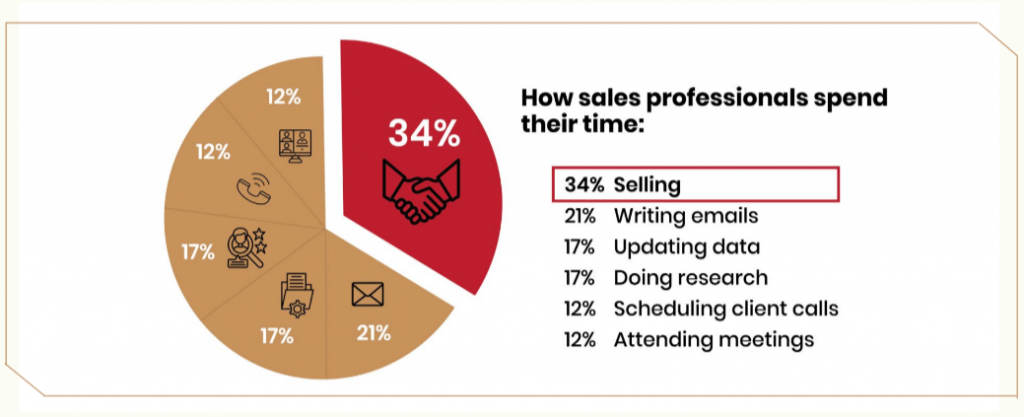Tech decision-makers are harder to reach than ever.
Their inboxes and calendars are constantly full, and every tech solution provider is fighting for their attention. Classic sales tactics such as cold calls, automated outreach, and LinkedIn messaging are taking up valuable time and budget.
Today’s B2B sales professionals like yourselves must explore alternative approaches to bypass the noise and connect with the right decision-makers. The goal is to secure the crucial first meeting with decision-makers before your competitors do.
This article suggests three ways to reach the right CxOs without wasting resources and build a consistent pipeline of engaged prospects year-round.
Hear from Your Peers: Challenges Meeting Decision-Makers
- Decision-makers are being inundated by sales representatives. They can’t even open their inboxes. The same goes for phone calls. – Chief Growth Officer, Bombayworks
- The market in Finland is quite challenging currently because everyone is trying to reach the same pool of decision-makers. Everyone has something important to tell them. I can imagine how exhausting it must be for those decision-makers. – Sales Director, Kipinä Software
- Acquisition is our biggest challenge. We need it the most but it’s also the most difficult to get an entry in the first place and then find the right person. In our business, from the first conversation to the signed contracts, it’s a long sales cycle. – Marketing Manager, Equinix
- The biggest challenge is to be able to contact somebody that you don’t necessarily know beforehand and who receives many contact requests every day. – Former Country Manager, Trend Micro
1. PARTNER UP – LOOK BEYOND LEAD GENERATION
Lead generation tools indeed help with prospecting. But beyond providing basic contact information, you are still stuck with cold calling, sending outreach emails, and hoping for a response. Therefore, it’s crucial to work with partners who eliminate that headache and take you straight to decision-makers. For instance, Management Events helps solution providers connect with targeted decision-makers via 15-minute 1-to-1 meetings.
With Management Events, you can:
- Bypass the gatekeeper: Management Events’ extensive network and industry expertise connect you with decision-makers and companies who fit your ideal customer profile.
- Meet decision-makers all year round: Secure at least 25 meetings with decision-maker prospects in just 3 months! Walk into meetings confident you’re speaking with the person who influences the buying decision.
- Say goodbye to scheduling meetings: Be supported by representatives who will manage meeting logistics with prospects. All you have to do is show up and do what you do best.
We’ve used Management Events’ services from way back for over 20 years. ME is really good at finding these executives that are otherwise hard to reach. Some customers we’ve connected with through ME are huge companies and you would need to speak to so many people before talking to the right ones.
– Marketing Director, IFS Nordics
You are capable of booking 1-to-1 virtual meetings and 15 minutes is enough to tell our story, who we are, and why we have requested this meeting and tend to agree on a follow-up. I think that the biggest value is the possibility of getting those meetings booked.
– Former Country Manager, Trend Micro
2. SECURE INVITES TO EXCLUSIVE NETWORKING EVENTS
Instead of waiting for decision-makers to come to you, why not go where they are? At in-person events, decision-makers actively scan the market and are open to casual conversations with solution providers. These events are also perfect settings for you to reignite connections with cold leads and discover new contacts.
In addition to pre-qualified meetings, Management Events grants you access to exclusive networking events with C-level decision-makers from top European organizations. These events provide a platform to showcase your expertise and build valuable relationships within your target market.
Before attending an event, sales professionals should:
- Know who’s attending: Request the attendee list and research key prospects. Find their latest interviews, projects, and pain points to start strong conversations.
- Make a game plan: Shortlist decision-makers you want to meet. Connect with them on LinkedIn before the event to break the ice.
- Be in the right room: Attend sessions related to your solution. You’ll find engaged prospects who already care about what you offer.
On top of the virtual 1-to-1 meetings, the in-person events give us good opportunities to meet people face to face and have a more personal conversation.
– Chief Growth Officer, Bombayworks
I had an opportunity to sit down with people in my target group that I actually wanted to meet. It was a very concrete way of showing us that you can get the right people to talk to us.
– Sales Director, Kipinä Software
3. EXPLORE BRANDING AND THOUGHT LEADERSHIP OPPORTUNITIES
Getting the attention of decision-makers starts with trust, and trust is built on strong branding and thought leadership. From startups to industry leaders, building trust and credibility ensures you are a top-of-mind solution for your target audience. They may not need your solution now, but they are more likely to come to you when they are ready.
Networking is a great first step to establish trust with your target audience, and to put a face to a company name. If you have the resources, take your branding and thought leadership initiatives to the next level with partners who can showcase your brand strategically at their events.
Working with Management Events unlocks the following possibilities:
- Get your name in front of decision-makers: Stand out with strategic logo placements at events that put your brand ahead of competitors.
- Lead the conversation: Host an executive roundtable and discuss key industry challenges with your ideal customers.
- Take the stage: Secure a panel seat or a 20-minute presentation to showcase your expertise and success stories.
Participating in your events as the main partner gives us brand visibility among new connections, which is very surprising for me, as I have been in the industry and these events for multiple years. Our team is active in your events because you have the network and connections to gather the right people.
– Vice President Global Business Engineering, CGI











